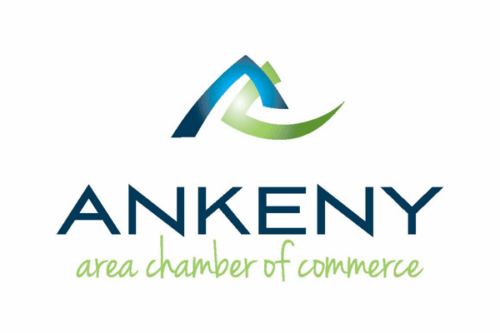If you’ve ever had an amazing dinner at a restaurant, you’ll understand how every micro-interaction impacts your impression of the night. When it comes to member experience, your association is similar.
What your members feel, think, and gain from your association can affect their involvement. And that can ladder up to your growth and revenue. If their experience is positive, that strong relationship can support your membership renewals and even lead to people championing your organization.
But remember: their experience isn’t just their first or last touch with your organization. It’s not just the appetizer! The repeated interactions, over time, are most important.
So what is member experience and why does it matter?
What is member experience?
Member experience is defined as how members feel about your association, how they interact with it, and then the value they attribute to it. A positive member experience promotes membership retention and expands your association’s reach to new members, often via referrals. It directly impacts the success and revenue of your association.
Why does member experience matter?
Across the board, businesses like Netflix, Lyft, and Instacart are seeing success by putting their customers first. In a study conducted by Harvard Business Review, 86% of customers are willing to pay more for a better experience . This shift towards a customer-oriented perspective also benefits organizations.
The emotions your association elicits frames how members see you—and how likely they are to renew. Whether this responsibility falls to a member experience manager, a member experience ambassador, or a volunteer, member experience is a crucial investment. It’s the golden ticket to improved member retention, via:
- Ensuring you’re adding value
- Solidifying association and member relationships
- Creating a foundation for growth and furthering your mission.
How to Evaluate your Current Member Experience
You have to know what is broken before you can fix it. Evaluating your current member experience gives you a clear picture of what’s working and where improvements are needed. By taking the time to assess every stage of the member journey, you can uncover pain points, streamline processes, and create a roadmap for meaningful change. This foundational step ensures your efforts are focused on the areas that will make the biggest impact.
1. Define Your Member Experience Goals
Before you can improve your member experience, you need to know what success looks like. Setting clear, actionable goals ensures your efforts align with your association’s broader mission and helps you measure progress along the way.
Start by asking yourself key questions:
- What do you want your members to feel when they engage with your organization?
- What specific outcomes are you aiming for, such as higher retention rates, increased event attendance, or better survey scores?
- How does member experience support your long-term organizational goals?
Once you have answers, define goals that are both ambitious and achievable. For example:
- Increase retention: Aim to boost membership renewal rates by 10% over the next year.
- Enhance engagement: Grow participation in programs and events by 20%.
- Improve satisfaction: Raise member satisfaction scores by addressing common pain points.
These goals give you a roadmap for your efforts and a way to track whether the changes you make are working. Most importantly, they keep the focus where it belongs—on creating an experience that truly benefits your members.
2. Map Your Member Journey
The member journey is the complete lifecycle of interactions a member has with your association. It starts the moment they discover you and continues through onboarding, engagement, renewal, and beyond. Think of it as a roadmap of your members’ experiences, with each touchpoint representing an opportunity to connect, delight, or unfortunately, frustrate.
Mapping this journey gives you insight into what your members go through and where there might be friction. It’s the first step in delivering a seamless and satisfying member experience.
How to Map Your Member Journey
To understand your members’ experiences, you need to break their journey into stages. Here’s a typical flow:
- Awareness: How do potential members find you? Maybe it’s through word of mouth, social media, or a Google search.
- Onboarding: What happens when someone decides to join? Are they greeted with a warm welcome, or left to figure things out on their own?
- Engagement: How do they interact with your events, programs, or benefits?
- Retention: Why do they choose to stay with your association?
- Renewal or Exit: How easy is it for them to renew? And if they leave, what’s driving that decision?
Understanding these stages gives you a clear starting point for mapping out the journey.
Gather feedback directly from members to understand their perspective. Combine this with data like website traffic, event participation, and renewal rates to identify common pain points, such as confusing processes or lack of communication.
Finally, create a visual journey map to outline each stage, touchpoint, and opportunity for improvement. Use these insights to refine processes, enhance communications, and deliver a better experience overall.
Mapping your member journey doesn’t need to be complex—it just needs to focus on making things easier and more enjoyable for your members.
3. Collect and Analyze Feedback
To truly understand your members’ experiences, you need to hear directly from them. Collecting and analyzing feedback helps you identify what’s working, what’s not, and where you can improve.
How to Collect Feedback
Start by reaching out to members through multiple channels:
- Surveys: Use tools like email surveys or in-app questionnaires to gather quantitative and qualitative insights.
- Interviews or Focus Groups: Dive deeper into member perspectives by having direct conversations with them.
- Feedback Forms: Make it easy for members to share thoughts at any time with accessible forms on your website or member portal.
Pay attention to recurring themes in the feedback. Are there common complaints about communication? Are members unaware of certain benefits? Look for patterns that point to larger trends or systemic issues.
Once you’ve gathered feedback, categorize it by key areas such as onboarding, communication, or event experiences. Combine this with other data, like participation rates or website behavior, to get a full picture of your members’ journey.
Using this information, you can pinpoint specific changes to improve the overall member experience. The better you understand your members, the better you can meet their needs.
4. Assess Internal Processes and Tools
Improving member experience often starts by looking inward. Your internal processes and tools play a significant role in how smoothly members interact with your association. Assessing these elements helps you identify inefficiencies and opportunities for improvement.
Evaluate Your Processes: Consider the workflows members interact with most, such as onboarding, event registration, and communication. Are these processes straightforward and user-friendly, or do they create unnecessary friction? Look for steps that feel redundant, confusing, or time-consuming.
Review Your Tools: Your technology should support your goals, not create roadblocks. Assess your membership management software, website, and other tools to ensure they’re up to date and easy for members to use. If your systems are outdated or don’t integrate well, they could be holding you back.
Ask for Staff Input: Your team often sees issues before members do. Ask them what processes or tools make their jobs harder or take too much time. Streamlining internal workflows benefits both your team and your members.
5. Identify Key Areas for Improvement
Once you’ve assessed feedback, processes, and tools, it’s time to identify where to focus your efforts. Pinpointing key areas for improvement ensures you prioritize the changes that will have the biggest impact.
Start with Member Pain Points: Look at common complaints or frustrations members have shared, such as confusing onboarding steps, lack of clear communication, or difficulties accessing benefits. These are often the best opportunities for quick wins.
Address Internal Bottlenecks: If certain processes or tools are slowing down your team, improving these areas can directly enhance member experience. For example, automating repetitive tasks might free up staff to spend more time engaging with members.
Focus on High-Impact Changes: Not all issues are equal. Start with changes that will affect the largest number of members or solve the most significant challenges. Improvements to onboarding or event registration processes, for instance, often yield noticeable results quickly.
By focusing on these areas, you can make meaningful, targeted improvements that enhance the member experience and help your association thrive.
15 Ideas to Create a Better Member Experience
To help you get started, here are twelve tips for improving your membership experience.
1. Understand your Members.
We can give you a ton of advice on general membership management. But what ultimately matters most is what your members want.
So…a great membership experience starts with a profile of your members. To build that profile, send out a survey that will help you understand the needs and pains of your membership base. This will serve as your compass for improving your member experience.
Sue Froggatt, a consultant and thought leader in the membership development and growth sector, recommends recording information like why members joined, what issues they’re experiencing, what successes have impacted them, and what questions and emotions they’ve had at different stages of your member experience. That way, you can ensure your communications are serving the members you have, and not the members you think you have.
2. Improve Your Welcome Touchpoints During Member Onboarding.
First impressions matter, and member onboarding is your chance to set the tone for a positive, lasting relationship. Start with a strong welcome email that acknowledges their reason for joining and introduces them to key resources, events, or ways to connect with other members. Personalize and automate this process using membership management software to ensure consistency.
Keep communication active during the onboarding period. Regular newsletters, forums, and social media groups help new members stay informed and engaged. Use these channels to highlight opportunities to get involved, answer questions, and showcase how members contribute to your organization’s success.
Don’t go silent after the initial welcome. If your association has slower seasons, prepare content that reflects on past achievements or builds excitement for future plans. For a more robust approach, consider creating a full onboarding program that guides new members step-by-step through their first few months.
3. Personalize Your Communications.
No one likes to feel like a number. When crafting your messaging, don’t go generic! Focus on personalized, thoughtful communication.
There’s two ways to personalize: first, the contents themselves. Develop your brand identity, leverage a friendly approach, throw in humor (where appropriate, and if it suits your audience!), and provide content they care about. You want to make your members feel good, and the best way is to make motivating the focus of your communication.
Second, if you’re using a central database for your members, you can personalize your messaging with names, behaviours, and what they’ve already engaged with.
Before you hit send (possibly too many times), though, consider quality vs. the quantity of what you’re sending. More doesn’t necessarily mean better. Every communication should have a purpose, and add value. If you’re too in touch, you could lose your members’ attention.
4. Conduct Regular Member Satisfaction Surveys.
How strong is your membership program? The answer is with your members.
Regular member satisfaction surveys help you analyze member satisfaction levels. You can get feedback, define your successes, and identify room for improvement.
A great way to survey your members is through an annual member needs assessment. Consider involving your members in the process by inviting them to help create the survey. They can give a valuable perspective on what questions to prioritize.
Even the process of giving feedback can make your members feel valued. But for them to really feel heard, your organization needs to apply that feedback to your daily operations and benefits development. Put your members’ feedback into action and you’ll be able to deliver value that matters to them.
5. Keep your Calendar Active.
Give your members plenty to look forward to! Offer a variety of events that cater to the needs and interests of your members, while supporting your goals. Naturally, you’ll have larger-scale events—such as conferences, panels, fundraisers—that may happen less frequently and require more planning. Balance these out with other ongoing events like networking opportunities and mentorship programs.
Be mindful of format! Hybrid or fully virtual events can make attendance more convenient for your members—and the technology has improved greatly in recent years.
Planning your yearly or quarterly calendar ahead of time also keeps you out of a reactionary mode of operating. It creates a structure while giving you flexibility to add or adapt in ways that are responsive to your members’ interests.
One last tip: Keep up the hype! Continue to engage your members after events. Acknowledge their attendance and get them excited about what’s next on your calendar.
6. Provide Opportunities to Connect.
Your network is a huge plus for your members. Make connecting easy for them, whether it’s through networking events, mentorship programs, access to discussion forums, or a membership directory. They’ll build new relationships with one another, access their community, and create a space where ideas and growth can be naturally fostered.
Even better: all that connection will ultimately ladder up to the value of your organization to your members.
7. Host Events that Speak to Your Members.
Events have been one of the biggest challenges over the last couple years. The first question you’ll want to ask is what type of event will serve your audience: in-person, hybrid, or virtual. Even when we’re back to normal, hybrid or virtual events might work better for your audience! so take a look at virtual event software that can help you create a digital experience that resonates.
Why? Because your events should always be convenient to your members, and fit into their lives. Be mindful of barriers that affect members like language, childcare, or transportation—put their needs at the forefront.
8. Create Partnerships with Other Nonprofits, Organizations, or Corporations.
Securing corporate sponsorships can give your events and programs a boost. With the extra funding or donated goods and services, you can engage members in fun activities or offer incentives for participation. You can also partner with volunteer organizations and programs to provide new avenues of growth for members motivated by giving back.
Don’t be afraid to look beyond your organization for inspiration and resources. These are relationships that everyone benefits from—your association, your partners, and your members.
9. Give your Members Ironclad Career Progression.
Your members are looking for opportunities: opportunities to grow, and opportunities for their careers.
Creating courses for your members can give them the skills they need to become more competitive in the job market. Expand your offerings to include educational resources and enhance your online learning system so it’s easy to access and use.
Want to support them in finding new opportunities? Give them a way connect and network during sessions and events with speakers or thought leaders. Also: consider creating a branded association job board tailored to the industry and interests relevant to your members.
10. Create a Central Hub of Information.
There are so many moving parts to your organization: you’ll need a central place your members can go to find key information.
Turn your membership website into a hub for all the ways people can get involved: events, social media channels, forums, learning, and professional development.
You can also use this central hub to better understand your members. Add your events calendar and pay attention to who registers. Include members-only pages with access to content specifically designed for them. Provide access to forums, e-lists, and other gated content. This gives you the ability to respond in targeted ways to those individuals and engage them further.
11. Create Member Spotlights
Showcasing individual members is an excellent way to make them feel valued and to strengthen your community. Consider featuring a “Member of the Month” in your newsletter, on social media, or on your website. Share their accomplishments, contributions to the organization, or how they’ve benefited from membership.
For example, highlight a member who recently led a successful project, received an award, or leveraged your resources to achieve a milestone. Not only does this recognition make the individual feel appreciated, but it also inspires other members to stay active and engaged. Over time, these spotlights can create a ripple effect, fostering a stronger connection among your members.
12. Develop a Member Mentor Program
A member mentor program can transform the onboarding experience for new members while engaging more seasoned ones. Pair new members with long-standing or experienced members who can guide them through the benefits, events, and resources your organization offers.
Mentors can also provide insights into the association’s culture and suggest ways to get involved, making the transition into membership smoother. For mentors, this program offers a way to give back and deepen their connection with the association. Whether you formalize the program with structured check-ins or keep it casual, this type of personal interaction creates a sense of belonging and builds stronger member relationships.
13. Provide Professional Development Resources
Adding professional development opportunities to your member benefits can significantly enhance their experience. Offer certifications, online courses, or exclusive webinars designed to help members advance their skills and careers.
You can partner with educational platforms or industry leaders to provide valuable content tailored to their needs. For example, you might host a webinar on emerging trends, provide free access to industry reports, or facilitate skill-building workshops. By focusing on growth and learning, you position your association as a resource for professional success, giving members a tangible reason to stay engaged and renew their memberships.
14. Provide Advocacy Updates
If your association is involved in advocacy work, keeping members informed about your efforts is essential. Regularly share updates on the causes you’re championing, legislative wins, or challenges you’re tackling on behalf of your members. Show them the direct impact of their membership by highlighting how their dues and participation support these initiatives.
For example, you might send newsletters summarizing recent advocacy efforts, share success stories in your blog, or invite members to participate in campaigns. Advocacy updates not only demonstrate your organization’s value but also reinforce a sense of shared purpose and community among your members.
15. Conduct Peer-Led Training Sessions
Leverage the expertise within your membership by organizing peer-led training sessions or webinars. This approach allows members to share their unique knowledge and experiences, creating a rich environment for learning and collaboration. For example, a seasoned member might lead a session on best practices in the field, innovative strategies, or lessons learned from their own career.
These sessions provide value on multiple levels: participants gain insights from peers who understand their challenges, and presenters have the opportunity to showcase their expertise and build credibility within the community. Peer-led training fosters a culture of mutual growth and strengthens the bonds among your members.
Their Good Experience is Your Good Experience
Putting care into every interaction is key to creating a positive member experience that affects your retention metrics. But remember: your association (and membership!) is a living, breathing organism that will go through changes and shifts. Continue to improve the member experience at your organization by keeping your finger on the pulse of what your members want, and adjusting accordingly.
While this may feel daunting, don’t fret! There are tools at your disposal to make it easy. A membership management software like MemberClicks is a great place to start, simplifying parts of your member experience by automating tasks like member renewals, dues collection, reporting, and more. You can request a demo here.
Looking for more strategies to engage your members? Check out our best practices guide here.
















